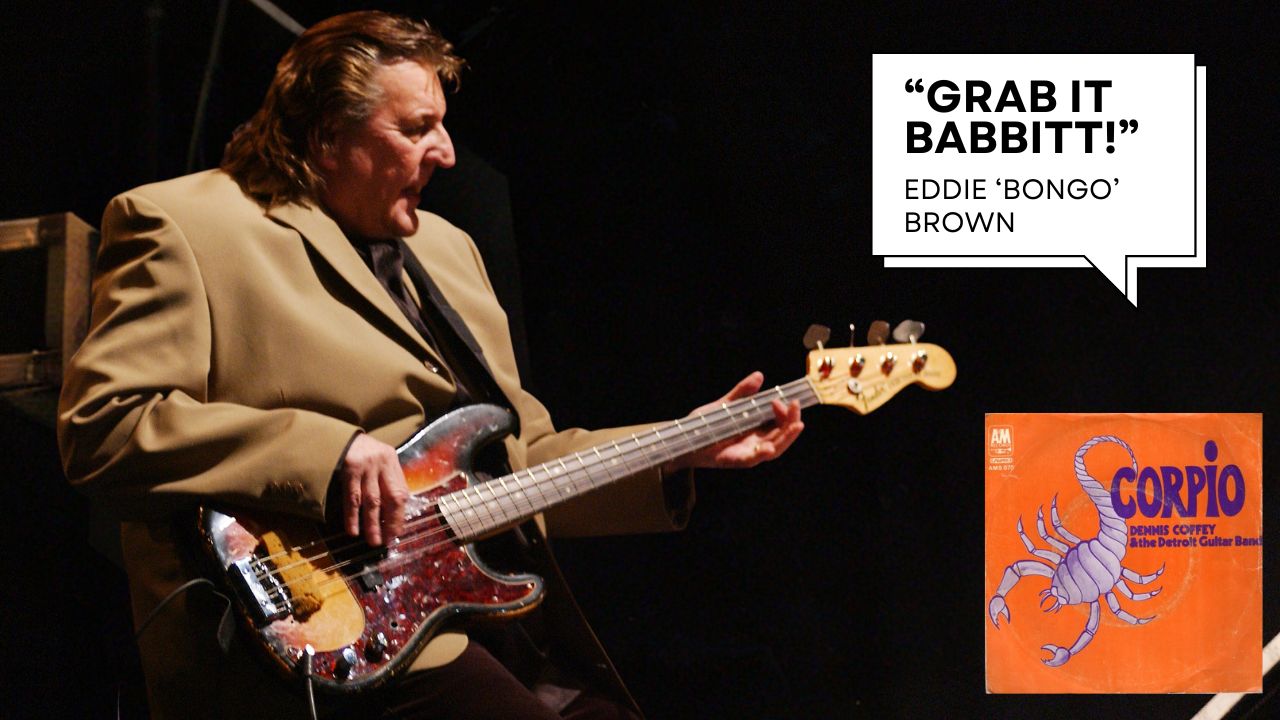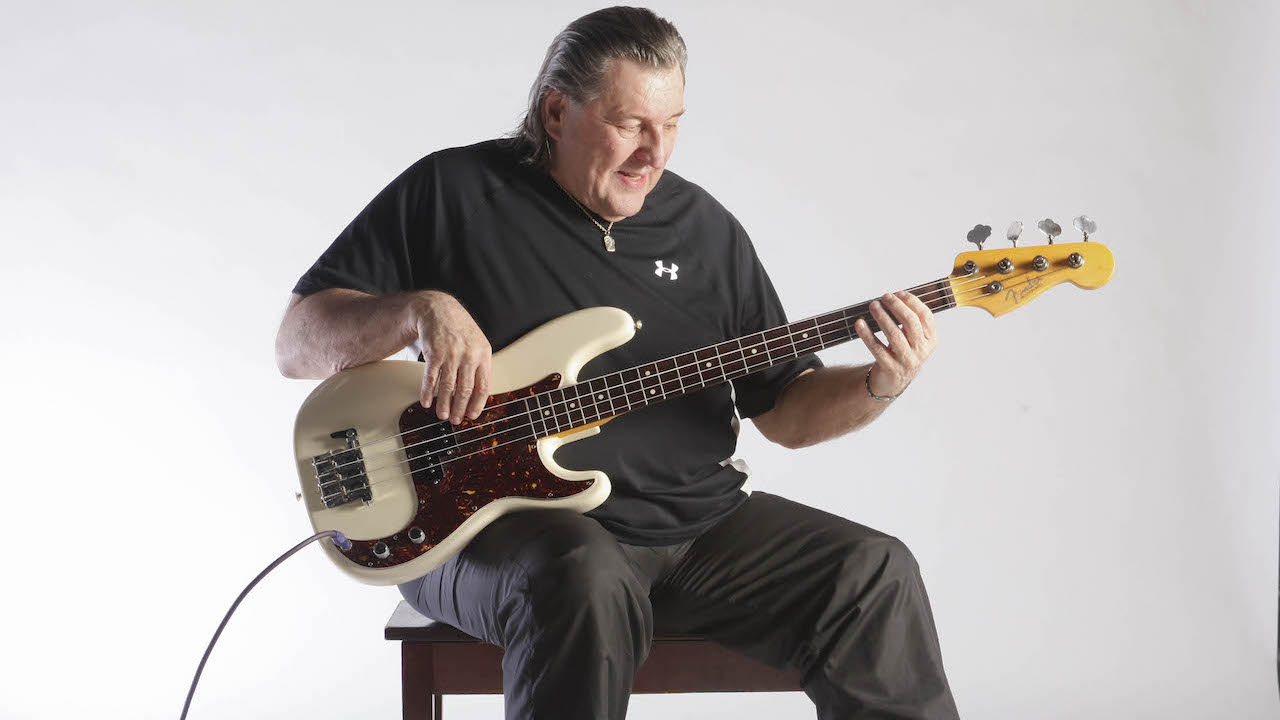
“If you couldn’t play that solo, from that record you weren't a bass player – you couldn't get a gig,” says bass ace Nate Watts during the film Standing in the Shadows of Motown. “He's telling the truth,” Ralphe Armstrong chimes in. “If you couldn't play Babbitt's solo, you weren't doing nothin’!”
Bob Babbitt needs little introduction to bass buffs, having notched up session credits on over 200 top-40 hits, in addition to playing on such historic tracks as Inner City Blues by Marvin Gaye, Signed, Sealed, Delivered by Stevie Wonder, Never Can Say Goodbye by Gloria Gaynor, War by Edwin Starr, Midnight Train to Georgia by Gladys Knight & the Pips and Tears of a Clown by Smokey Robinson.
The Pittsburgh, Pennsylvania-native's 4-string flight on Scorpio by Dennis Coffey & the Detroit Guitar Band takes up almost half the song. In addition to Coffey and Babbitt, the track also features Joe Podorsek on guitar and such Funk Brother notables as Uriel Jones and Richard ‘Pistol’ Allen on drums, Eddie ‘Bongo’ Brown on percussion, Jack Ashford on tambourine, Earl Van Dyke on piano, and six-stringer Ray Monette.
Babbitt and Coffey were already well acquainted, having worked together in the Royaltones and on numerous Detroit sessions throughout the '60s. Babbitt had also laid down most of the bass for Coffey's first solo album, Hair and Thangs.
For Scorpio, Babbitt played fingerstyle on his '65 Fender Precision strung with La Bella medium-gauge flatwounds. He recorded direct and played most of the song low on the neck, making copious use of the open strings. He also likely used a damp household sponge under the strings at the bridge to help deaden the strings. “I was doing that a lot for R&B and gospel dates, so there's a good possibility I did it for Scorpio, too.”
Babbitt admits he was largely oblivious to the musicians' chatter that bubbles underneath his bass solo, including ‘Bongo’ Brown's now-famous “Grab it Babbitt!” line. “To tell the truth I wasn't thinking about any of it,” he told Bass Player. “Most of it I only heard on the playback. I guess I was trying to focus so much on the solo that I didn't think too much about what they were saying.”

The track starts with a bang, as the band knocks out a repeated 1-bar phrase packed with powerful, biting chords. Though the basic harmonies can be pinned down fairly easily, there are also occasional rogue tone scrunches tucked away among the piano, bass guitar, and nine guitar tracks.
For example, the natural 5th can just be heard poking through the overriding flavor of many of the m7b5 chords, while the closely voiced 13 chords also help give these opening bars serious punch.
As the track settles into a bouncing R&B groove, Babbitt lays down a sub-hook that occurs each time the main guitar theme appears. Following a repeat of the song's opening four-bar statement, the group pause on a portentous B7 chord. Then follows one of the most famous and frequently sampled percussion breakdowns in recorded history.
Babbitt joins the party with a short end-of-bar pickup, leading into an echo of his initial bass figure. He quickly steps things up, however, by rising to a high E on the G string, a touchstone that he'll return to throughout the next 90 seconds.
The majority of the solo pivots around the E minor pentatonic scale, though Babbitt often uses F# to link the 1st and 3rd degrees of the scale (E and G, respectively). Babbitt also presents seemingly isolated ideas, only to later pick them up again for development.
This can be heard in the repeating D-E-D-E 16th figure that occurs full-fledged for the first time in bar 74. He then recycles this idea. Notice how his see-sawing major 2nd figures are usually hammered on or pulled off, imbuing them with subtly different dynamics.
Babbitt begins winding things down from beat two of bar 97, with a three-phrase staggered descent to low E on beat two of bar 99, which opens up a natural breathing point. His pithy line in bar 100 likely acted as a signal for his musical comrades to let them know he was done. “Where it ended is where it ended. It seems like it was destined to reach that spot.”
The band then cases seamlessly back into the track's opening hook, followed by a brief nod to the extended B7 chord. A final reiteration of the song's main groove and guitar-rich theme follows, before the fade-out brings the curtain down on one of Babbitt's finest musical moments.

“It was only after I sat down and listened to the playback that I realized how long the solo actually was, and I certainly didn't think they were going to keep all of it. We rehearsed the song – the main parts of the tune like the intro figure and the stuff before the breakdown – but that was the only time I ever did that solo; I don't remember doing any other takes.”
If you're unfamiliar with Scorpio and Bob's knockout solo, be warned: the version on iTunes (and most of the other download services) features a later re-recording of the track, without Babbitt.
The version you're after is from the Evolution album and not the version found on numerous digital-download-only compilations.







